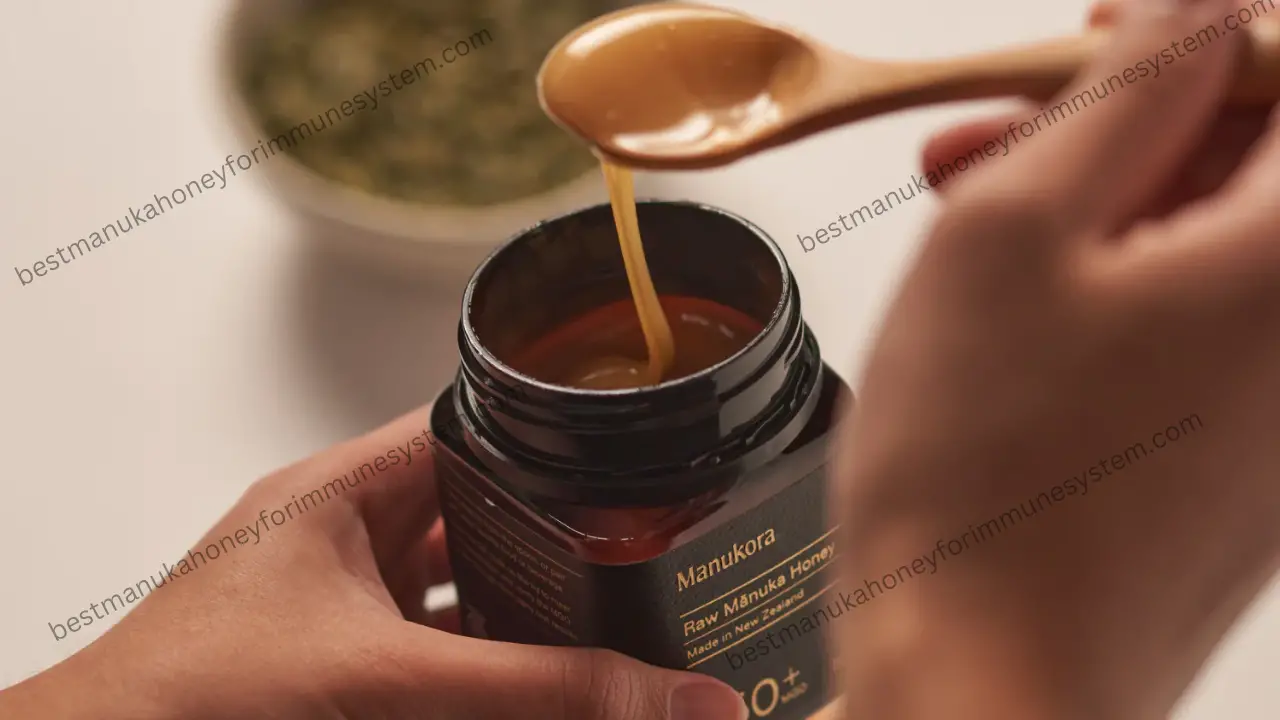Manuka honey is a unique and highly sought-after honey produced in New Zealand from the nectar of Manuka flowers.
It has become increasingly popular in recent years due to its health benefits and robust flavor profile. When it comes to measuring the potency of Manuka honey, there are two main rating systems: KFactor and MGO.
Testing Manuka Honey
It is important to test Manuka honey to ensure its quality, authenticity, consistency and reputation.
It ensures that the honey is of high quality, free from contamination, and meets the standards necessary for consumption. Testing also helps maintain product integrity.
This is important for consumers who rely on manuka honey for its potential health benefits. Overall, testing Manuka honey is essential to ensure that consumers are getting an authentic, high-quality product.
You can find the Best Manuka Honey with an Immune System.
KFactor Manuka Honey
First, KFactor is a type of rating system. KFactor measures honey pollen counts, indicating the proportion of Manuka pollen in honey.
The higher the K factor value, the higher the percentage of Manuka pollen in the honey. This means the honey comes from a region where Manuka plants are abundant.
KFactor Manuka Honey is produced naturally without heat treatments or artificial methods, ensuring that it retains all of its natural enzymes and other beneficial properties.
The KFactor Rating System
K-Factor ratings range from KFactor 12 to KFactor 16, with higher numbers indicating higher levels of purity and potency.
Testing manuka honey for KFactor involves collecting a sample of honey and using a microscope to count the number of pollen grains present.
The percentage of manuka pollen is then calculated and used to assign a KFactor rating to the honey.
Here’s a look at the K-factor ratings for manuka honey:
- K Factor 12: This is the lowest grade and contains a minimum of 65% manuka pollen.
- K Factor 16: This rating indicates a high level of purity and potency, with a minimum of 75% manuka pollen.
MGO Manuka Honey
On the other hand, Manuka MGO honey is known for its high concentration of methylglyoxal. This is a compound believed to be responsible for the antibacterial properties of honey.
MGO ratings measure the concentration of methylglyoxal in honey, and the higher the MGO rating, the stronger the antibacterial properties of honey.

Although Manuka MGO honey is beneficial for its antibacterial properties, some manufacturers may heat-treat the honey to increase the MGO content.
This causes it to lose some of its natural enzymes and other beneficial properties. So even if you think you are buying high MGO honey, it may not be authentic.
The MGO Rating System
The MGO rating system ranges from MGO 30+ to MGO 1000+, with higher numbers indicating greater antibacterial potency.
Testing typically involves measuring the concentration of MGO in honey using a number of techniques, including HPLC (high-performance liquid chromatography) and NMR (nuclear magnetic resonance) spectroscopy.
Here’s a look at the MGO ratings for manuka honey:
- MGO 30+: This is the lowest rating and has a low level of antibacterial activity.
- MGO 100+: This rating indicates a medium level of antibacterial activity.
- MGO 250+: This grade indicates a high level of antibacterial activity and is often used for therapeutic purposes.
- MGO 400+: This grade indicates a very high level of antibacterial activity and is also used for therapeutic purposes.
- MGO 550+: This is a rare and very high rating, indicating extremely potent antibacterial activity.
- MGO 1000+: This is the highest rating available and indicates extremely potent antibacterial activity.
The Superior Manuka Honey Grading System
In conclusion, the KFactor and MGO rating systems are used to measure the potency of Manuka honey. However, they measure different properties of honey.
Although MGO Manuka Honey may be beneficial for its antibacterial properties, KFactor Manuka Honey is considered the superior choice.
It is produced naturally without heat treatment to increase the MGO content, thus guaranteeing the preservation of all its natural enzymes.
You may also like…
IS IT TRUE THAT 80% OF ALL MANUKA HONEY IS FAKE?

